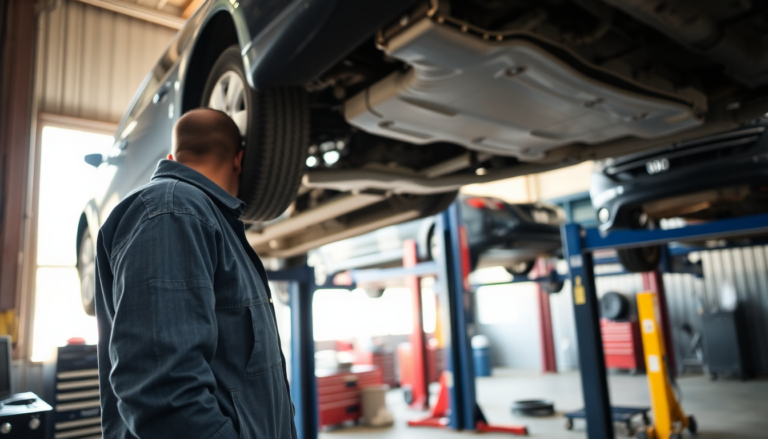Argomenti trattati
The automotive landscape in California is not just about shiny cars and roaring engines; it’s also about ensuring that the vehicles on the road are safe and compliant with environmental standards. Enter the Bureau of Automotive Repair (BAR), a crucial part of the Department of Consumer Affairs, dedicated to overseeing the automotive repair industry. Imagine a world where you can drive with confidence, knowing that your vehicle has been inspected and approved by professionals who care deeply about safety and pollution control. That’s the essence of what BAR strives to achieve every day.
Mission and responsibilities of the Bureau of Automotive Repair
The mission of the Bureau of Automotive Repair is multifaceted. It aims to protect Californians by ensuring that automotive repair dealers, Smog Check stations, and vehicle safety systems technicians operate within the law. The BAR mediates complaints, allowing consumers to recover millions of dollars annually through refunds, rework, and bill adjustments. I remember when a friend of mine had a dispute with a repair shop over a botched job; thanks to BAR’s mediation services, he not only got his money back but also had the repairs redone without additional cost. It’s instances like these that truly highlight the importance of having a regulatory body in place.
In addition to mediating complaints, BAR investigates licensees who violate the law. This oversight ensures that rogue mechanics who cut corners or put customers at risk are held accountable. Furthermore, the Bureau conducts no-cost inspections of collision repairs, which is incredibly beneficial for consumers wanting to ensure their vehicles are safe post-accident. I often think about how many lives could be saved if every vehicle on the road underwent such scrutiny.
Programs that enhance vehicle safety and environmental protection
BAR offers several programs aimed at improving road safety and reducing emissions. The Auto Body Inspection Program provides inspections at no cost, ensuring that repairs meet safety standards. Another noteworthy initiative is the Cars for Schools Program, which donates retired vehicles to schools across California. This not only supports hands-on learning but also raises awareness about vehicle maintenance among students. I mean, what better way to engage young minds with the automotive world than by giving them the tools to learn firsthand?
One of the standout programs is the Consumer Assistance Program, designed to assist eligible consumers with vehicle repairs or retirement. This program is a lifesaver for many low-income families who rely on their vehicles for daily transportation. The Smog Check Program is another critical initiative, identifying and repairing vehicles that emit high levels of pollutants. As many know, clean air is essential for public health, and BAR’s efforts play a significant role in this endeavor.
Leadership and administrative structure
Leadership at BAR is pivotal in guiding its mission and programs. Patrick Dorais, the chief of BAR, has been at the helm since 2013, overseeing all operational matters. His extensive experience within the Bureau and various state agencies has equipped him with the knowledge necessary to enforce regulations effectively. It’s fascinating to note how individuals like Dorais, who once dealt with consumer affairs and environmental protection, can bring a wealth of experience to such a critical role.
Linda Janssen, appointed as deputy chief in 2021, complements Dorais’ vision with her rich background in state services. The team also includes Clay Leek, who manages the Smog Check Engineering and Information Services Division, and Bill Thomas, overseeing field operations. The synergy between these leaders fosters an environment where safety and consumer protection are prioritized. Personally, I believe that a robust leadership structure is vital for any organization, especially one as impactful as BAR.
Engagement with the automotive community
BAR does not operate in a vacuum; it actively engages with the automotive community through its various advisory groups. These groups provide crucial insights into the needs and challenges faced by automotive professionals and consumers alike. The BAR Advisory Group, for instance, advises on pertinent issues affecting the industry, while the Educational Advisory Group focuses on training requirements. As someone who has attended several industry conferences, I can attest to how valuable these discussions can be in shaping policies that resonate with both consumers and repair shops.
The connection between BAR and the automotive community is vital. It creates a feedback loop where regulations can be adjusted based on real-world experiences. This kind of collaboration is essential to foster trust and ensure that everyone, from the mechanic to the consumer, is on the same page regarding vehicle safety and emissions standards.
Looking ahead: the future of automotive repair in California
As we move into an era of increasing technological advancements in the automotive sector, the role of the Bureau of Automotive Repair will undoubtedly evolve. With the rise of electric vehicles and smart technology, will BAR adapt its programs to meet new challenges? I can’t help but wonder how the regulatory landscape will shift as more innovative technologies emerge. It’s a thrilling yet daunting prospect, indicating that the Bureau must stay ahead of the curve, continuously updating its standards and practices to ensure public safety and environmental protection.
In conclusion, while the automotive world is often viewed through the lens of speed and performance, organizations like the Bureau of Automotive Repair remind us of the fundamental need for safety and accountability. The work they do is crucial in maintaining the integrity of the automotive repair industry and protecting consumers throughout California. As the industry evolves, it’s essential to keep a close eye on how regulatory bodies like BAR adapt to the changing landscape. After all, a safe ride is the best ride.

